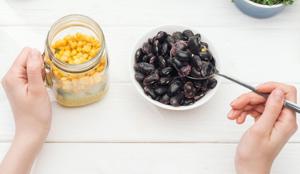When you enter a grocery store, there's a good chance that a display of rotisserie chickens is nearby. While you normally pay for the extra labor in a prepared product versus raw, the idea that it is more expensive than raw is one of the rotisserie chicken myths you should stop buying into . Rotisserie chickens tend to be cheaper because of a cunning pricing strategy.
Rotisserie chickens are what's known as a loss leader. In business, a loss leader is a product that the company sells at a financial loss because the item makes customers more likely to purchase other products. Grocery stores are betting that customers who pick up a rotisserie chicken will make a whole meal of the bird.

That often means buying side dishes, which the store sells at a greater profit. But it can also mean buying other ingredients to make something that includes the rotisserie chicken. Either way, lower profits on the bird lead to more money for the store.
Why rotisserie chicken makes a good loss leader It may seem somewhat counterintuitive, but loss leaders can be big business. That pricing strategy is one of Costco's rotisserie chicken secrets that most people don't know . Costco's rock-bottom price of $4.
99 per bird makes the chickens extremely popular with customers. Its rotisserie chickens are so popular that Costco co-owns and operates a $440 million poultry farm and factory to satisfy customer demand. Directly controlling its own chicken supply helps the chain keep selling rotisserie chickens as an important loss leader.
Despite their popularity, Costco's rotisserie chickens sometimes go unsold. However, Costco reuses unsold rotisserie chicken in other in-store chicken products , such as soups and enchiladas. The store may even shred the meat off the bones and repackage it as shredded chicken, which you can use in a number of ways to level up rotisserie chicken , like pizza, tikka masala, or salads.
.
Food

The Sneaky Reason Prepared Rotisserie Chickens Are Cheaper Than Raw Ones

Picking up a rotisserie chicken saves you a lot of time versus purchasing a raw one to cook at home. So, why are these prepared birds so much cheaper?















